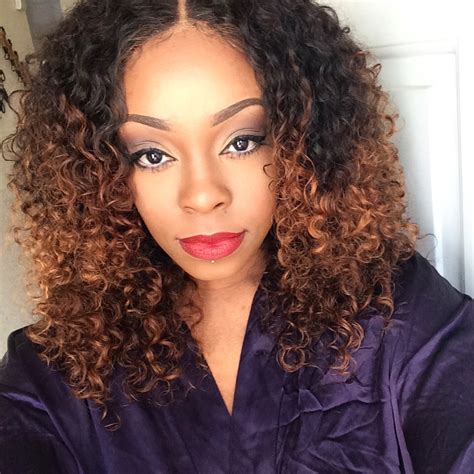Introduction

Water wave hair, characterized by its soft, undulating curls that resemble the gentle ripples of water, has emerged as a highly sought-after hair texture. This versatile style offers endless styling possibilities, making it a favorite among celebrities and fashion enthusiasts alike. In this comprehensive guide, we delve into the world of water wave hair, exploring its properties, styling techniques, and tips for achieving the perfect look.
Benefits of Water Wave Hair
1. Versatility: Water wave hair possesses remarkable versatility, allowing it to be styled in countless ways. From effortless beachy waves to chic updos, this hair texture can effortlessly adapt to any occasion or personal preference.
2. Texture and Volume: The unique shape of water waves creates a soft, texturized look that adds volume and dimension to the hair. This texture is particularly beneficial for those with thin or flat hair, as it imparts an illusion of fullness and thickness.
3. Natural and Effortless: Water wave hair exudes a natural and effortless appeal, making it perfect for those who seek a low-maintenance yet stylish hairstyle. The waves effortlessly blend with the rest of the hair, creating a cohesive and flattering look.
Choosing the Right Water Wave Hair
1. Texture: The texture of water wave hair can vary from loose and subtle to tight and defined. Consider your personal preferences and face shape when selecting the ideal texture for your hair. Looser waves are more versatile and universally flattering, while tighter waves add more drama and definition.
2. Length: The length of water wave hair can also impact its overall look and feel. Shorter lengths (shoulder-length or above) create a spunky and playful vibe, while longer lengths (chest-length or below) convey elegance and sophistication.
3. Color: Water wave hair is available in a wide range of colors, from natural hues like black and brown to vibrant shades like blonde and red. Choose a color that complements your skin tone and personal style.
Styling Water Wave Hair
1. Washing: Use a sulfate-free shampoo and conditioner specifically designed for curly or textured hair. This will help maintain the hair’s natural moisture and definition. Avoid over-washing, as it can strip the hair of its essential oils.
2. Detangling: Gently detangle your water wave hair using a wide-toothed comb or brush. Start from the ends and work your way up to the roots to prevent breakage.
3. Styling Products: Apply a curl-enhancing cream or mousse to damp hair, distributing it evenly from roots to tips. This will help define the waves and prevent frizz.
4. Diffusing: Dry your water wave hair using a diffuser attachment on your blow dryer. This will help enhance the waves and reduce frizz. Focus the diffuser on each section of hair until it is completely dry.
5. Air Drying: If you prefer to air dry your water wave hair, braid it into loose braids while it is damp. This will encourage the waves to form as it dries.
Tips and Tricks for Perfect Water Wave Hair
1. Use a Deep Conditioner: Regularly deep condition your water wave hair to restore moisture and maintain its health. Deep conditioning treatments help repair damaged hair and improve its overall appearance.
2. Sleep on a Silk Pillowcase: Sleeping on a silk pillowcase can reduce friction and prevent breakage, maintaining the integrity of your water wave hair.
3. Avoid Heat Styling: Excessive heat styling can damage water wave hair and compromise its natural texture. If you must use heat styling tools, apply a heat protectant spray to minimize heat damage.
4. Brush Regularly: Brush your water wave hair gently with a brush designed for curly hair. This will help distribute natural oils and prevent tangles.
Common Mistakes to Avoid
1. Over-Washing: Over-washing water wave hair can strip it of its natural oils, leading to dryness and breakage. Aim to wash your hair once or twice a week.
2. Brushing Dry Hair: Brushing dry water wave hair can cause breakage and frizz. Always brush your hair when it is damp and detangled.
3. Using Harsh Products: Avoid using harsh shampoos and conditioners that contain sulfates or alcohol, as they can damage water wave hair.
4. Not Deep Conditioning: Neglecting deep conditioning can lead to dry and brittle water wave hair. Aim to deep condition your hair at least once a week.
FAQs
1. What is the difference between water wave hair and body wave hair?
– Water wave hair has tighter and more defined curls than body wave hair.
2. Can I use a curling iron to create water waves?
– Yes, you can use a curling iron to create water waves, but it is important to use a large-barrel curling iron and to curl small sections of hair at a time.
3. How do I prevent frizz in my water wave hair?
– Avoid over-washing, use a sulfate-free shampoo and conditioner, and apply a curl-enhancing cream or mousse to damp hair.
4. How often should I trim my water wave hair?
– Aim to trim your water wave hair every 6-8 weeks to remove split ends and maintain healthy hair growth.
Conclusion
Water wave hair is a versatile and stunning hair texture that can transform your look. By choosing the right products and following the proper styling techniques, you can achieve the perfect water wave hair that will turn heads wherever you go. Embrace the beauty of this unique hair texture and enjoy the endless styling possibilities it offers.
